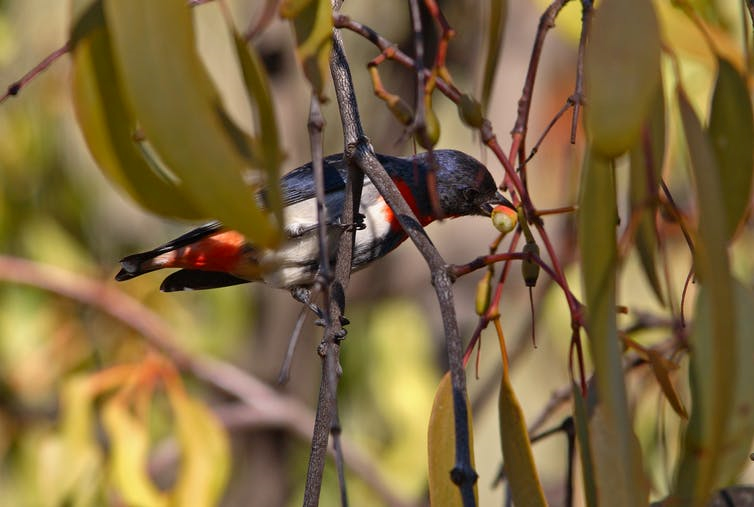A kiss under the mistletoe is a Christmas tradition. However, the benefits of this parasitic plant extend well beyond just encouraging human romance!
Recent study of the ecology and interactions of Australia’s 90 native species of this little sucker reveal a positive effect on diversity and ecosystem health. Dr David Watson, a plant biologist from Charles Sturt University in Albury, NSW, says that the benefits come from both bottom up and top down processes. “From the bottom we see that mistletoe sheds enriched litter, effectively fertilizing nutrient-deprived soils and boosting productivity. With its nutritious leaves, fruits and flowers full of nectar, a range of top-down processes are also evident. Areas with mistletoe bring in more birds and mammals which, in turn, deposit seeds and nutrients, and control leaf-eating insects.”
Mistletoes live off the sap of their hosts and thrive in almost every type of climate and soil in Australia. They are found everywhere except Tasmania.
Those living on the coast tend to flower in spring and summer, but many mistletoes are at their peak of flowering in March, particularly in the drier inland areas. These bizarre plants are easy to spot when in bloom. Their bright antler-shaped orange or red blossoms stand out against the dark foliage, advertising their nectar to birds.
Many mistletoes continue to flower in drought or during winter, when few other blossoms are available. Indeed, they are often the only local source of nectar and pollen during hard times. Packed with sugar and carbs, mistletoe fruits are good tucker, not just for the ubiquitous mistletoe bird, but also for cuckoo-shrikes, ravens, cockatoos, shrike-thrushes, woodswallows, bowerbirds, and even emus and cassowaries. Not to mention many various butterfly larvae and possums.
Sources:
https://news.csu.edu.au/latest-news/science/mistletoe-not-just-for-christmas
http://www.northwestweeds.com.au/sample-page/mistletoe-friend-or-foe/ http://www.abc.net.au/science/articles/2004/03/05/2044992.htm

